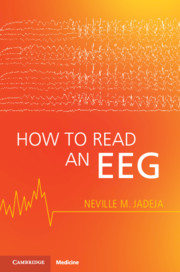Book contents
- How to Read an EEG
- How to Read an EEG
- Copyright page
- Dedication
- Contents
- Figure Contributions
- Foreword
- Preface
- How to Read This Book
- Part I Basics
- Part II Interpretation
- Part III Specific Conditions
- Chapter 18 Common Seizure Mimics
- Chapter 19 Seizures
- Chapter 20 Epilepsies
- Chapter 21 Epilepsy Syndromes
- Chapter 22 Focal Dysfunction (Lesions)
- Chapter 23 Global Dysfunction (Encephalopathy)
- Chapter 24 Status Epilepticus
- Chapter 25 Post Cardiac Arrest
- Chapter 26 Brain Death
- Appendix How to Write a Report
- Index
- References
Chapter 24 - Status Epilepticus
from Part III - Specific Conditions
Published online by Cambridge University Press: 24 June 2021
- How to Read an EEG
- How to Read an EEG
- Copyright page
- Dedication
- Contents
- Figure Contributions
- Foreword
- Preface
- How to Read This Book
- Part I Basics
- Part II Interpretation
- Part III Specific Conditions
- Chapter 18 Common Seizure Mimics
- Chapter 19 Seizures
- Chapter 20 Epilepsies
- Chapter 21 Epilepsy Syndromes
- Chapter 22 Focal Dysfunction (Lesions)
- Chapter 23 Global Dysfunction (Encephalopathy)
- Chapter 24 Status Epilepticus
- Chapter 25 Post Cardiac Arrest
- Chapter 26 Brain Death
- Appendix How to Write a Report
- Index
- References
Summary
SE is defined as 5 minutes or longer of continuous clinical and/or electrographic seizure activity or recurrent seizures without interval recovery; t1 refers to the time point beyond which there is failure of mechanisms responsible for seizure termination or initiation of mechanisms which lead to abnormally prolonged seizures, and t2 refers to the time point beyond which there are long term consequences due to neuronal injury, death, and alteration of neuronal networks. Semiologically, SE can be classified as with or without prominent motor features. Convulsive SE may evolve into NCSE in a significant minority after convulsive activity ceases. NCSE may be diagnosed on EEG in a significant minority of critically ill patients. EPC may not be associated with ictal activity on surface EEG. De novo absence SE may be seen in older individuals in the setting of abrupt benzodiazepine withdrawal. They may have a previous or family history of IGE.
Keywords
Information
- Type
- Chapter
- Information
- How to Read an EEG , pp. 230 - 238Publisher: Cambridge University PressPrint publication year: 2021
